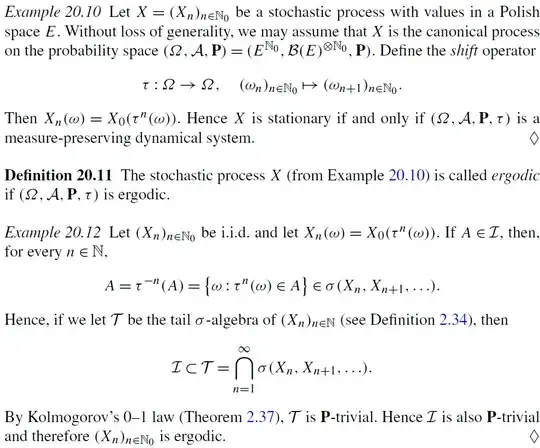Let $(\Omega,\mathcal A,\operatorname P)$ be a probability space, $\tau$ be a measurable map on $(\Omega,\mathcal A,\operatorname P)$ with $\operatorname P\circ\:\tau^{-1}=\operatorname P$, $X:\Omega\to\mathbb R$ be $\mathcal A$-measurable and $$X_n:=X\circ\tau^n\;\;\;\text{for }n\in\mathbb N.$$
Assume $(X_n)_{n\in\mathbb N_0}$ is independent. Are we able to conclude that $\operatorname P$ is $\tau$-ergodic?
My idea is as follows: We should have $$\tau^{-n}(A)=\left\{\omega\in\Omega:\tau^n(\omega)\in A\right\}\in\mathcal F_n:=\sigma(X_k,k\ge n)\tag1$$ for all $A\in\mathcal A$ and $n\in\mathbb N$. So, we should be able to conclude that $$\mathcal I:=\left\{A\in\mathcal A:\tau^{-1}(A)=A\right\}\subseteq\mathcal T:=\bigcap_{n\in\mathbb N}\mathcal F_n\tag2$$ and the independence assumption should yield the claim by Kolmogorov's 0-1 law. Am I missing something?
EDIT: A similar statement is proven in Probability Theory: A Comprehensive Course:
